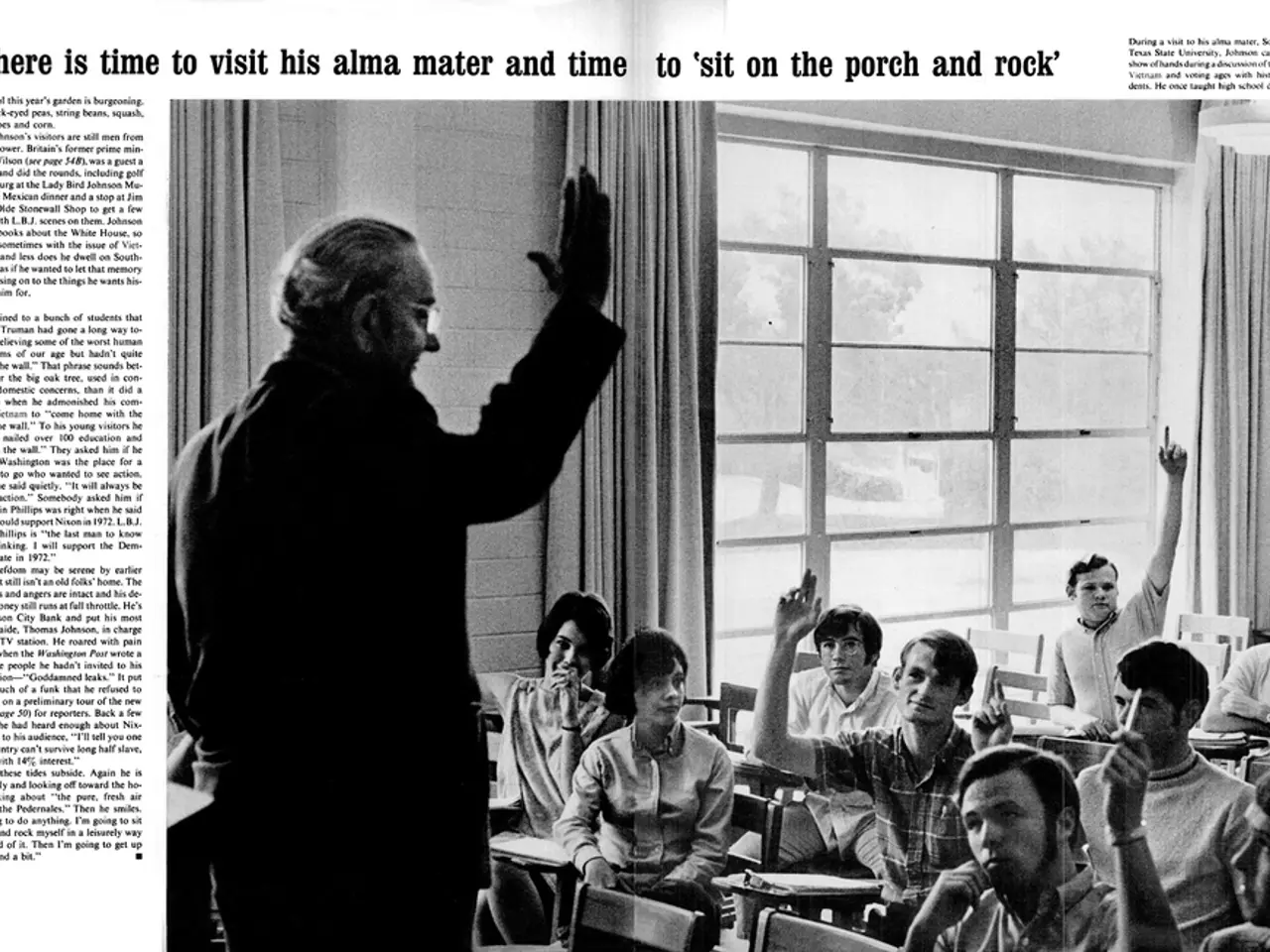Differences in Symptoms of Heart Attacks between Men and Women: Understanding the Differences
In the realm of heart health, understanding heart attacks is crucial. This condition, falling under the umbrella term of heart disease, occurs when the blood supply to the heart is suddenly blocked, often due to a clot forming in a coronary artery[1].
Symptoms of a heart attack can vary, and there are differences in how males and females describe these symptoms. While both men and women commonly report chest pain or discomfort, women more frequently describe additional or alternative symptoms that are often subtler and atypical[2][4].
Men typically describe intense chest pain characterized by pressure, squeezing, or tightness, often located at the center or left side of the chest. Women, on the other hand, often describe chest pain as pressure or tightness rather than severe pain[1][2][3][4].
Women may experience a broader range of symptoms beyond classic chest pain, including pain radiating to the neck, jaw, shoulder, upper back, or one or both arms[1][2][4]. They may also experience nausea or vomiting, unusual or extreme fatigue, shortness of breath, lightheadedness, dizziness, sweating, indigestion, or feelings of anxiety or impending doom[1][2].
These differences in symptom description can affect recognition, diagnosis, and timely treatment of heart attacks in women[1][2]. Women’s symptoms are often mistaken for less serious conditions such as indigestion, anxiety, or fatigue, leading to delayed diagnosis and treatment[1][2].
Heart attacks can lead to complications such as arrhythmias, where the heart's natural electrical rhythm is disrupted, potentially requiring a pacemaker[5]. Severe heart damage from a heart attack may result in heart failure, which can be treated with heart surgery or a pacemaker[6].
Risk factors for a heart attack include increasing age, being male, parents with heart disease, smoking, high cholesterol, high blood pressure, physical inactivity, living with obesity, diabetes, stress, alcohol intake, and diet[7].
Interestingly, research suggests that females may be more likely to experience a general feeling of unwellness or unexplained weakness[3]. They may also feel throat pain, neck pain, and nausea more frequently than males[4].
Males, however, are more likely to experience less common symptoms of a heart attack, such as heartburn, back pain, or indigestion-like pain[3].
Adopting a Mediterranean diet and engaging in regular exercise can improve heart health and reduce the risk of a heart attack[8][9]. Reducing or limiting alcohol intake can also lower the risk of a heart attack[7].
It's important to note that erectile dysfunction may potentially be a risk factor for heart problems, but the research is not conclusive[7]. Quitting smoking can significantly reduce the risk of heart problems, and this risk continues to decline over time[7].
Females may be more likely to develop depressive symptoms and experience complications following a heart attack[10]. Early intervention is key, as 50% of people who experience a heart attack have early symptoms, and early intervention can reduce the risk of heart damage[11].
In conclusion, understanding the unique symptoms women may experience can help in early recognition and treatment of heart attacks. Regular exercise, a Mediterranean diet, and a lifestyle that includes quitting smoking and limiting alcohol intake can help reduce the risk of heart attacks for both men and women. Seeking medical help immediately if heart attack symptoms are present is crucial for timely intervention and improved outcomes.
References:
- American Heart Association. (2021). Understanding Women's Heart Attack Symptoms. Retrieved from https://www.heart.org/en/health-topics/womens-heart-health/understanding-womens-heart-attack-symptoms
- Mayo Clinic. (2021). Heart Attack Symptoms in Women: What's Different? Retrieved from https://www.mayoclinic.org/diseases-conditions/heart-attack/in-depth/heart-attack-symptoms-in-women/art-20048138
- National Heart, Lung, and Blood Institute. (2021). Women and Heart Disease. Retrieved from https://www.nhlbi.nih.gov/health-topics/women-and-heart-disease
- Cleveland Clinic. (2021). Women's Heart Attack Symptoms. Retrieved from https://my.clevelandclinic.org/health/diseases/16764-womens-heart-attack-symptoms
- American Heart Association. (2021). What Are Heart Rhythm Disorders? Retrieved from https://www.heart.org/en/health-topics/heart-rhythm-disorders
- American Heart Association. (2021). What Is Heart Failure? Retrieved from https://www.heart.org/en/health-topics/heart-failure/what-is-heart-failure
- American Heart Association. (2021). Preventing Heart Disease: 8 Lifestyle Changes to Lower Your Risk. Retrieved from https://www.heart.org/en/health-topics/heart-attack/understanding-heart-attacks/preventing-heart-disease-8-lifestyle-changes-to-lower-your-risk
- American Heart Association. (2021). Mediterranean Diet. Retrieved from https://www.heart.org/en/healthy-living/healthy-eating/eat-smart/nutrition-basics/mediterranean-diet-101
- American Heart Association. (2021). Physical Activity. Retrieved from https://www.heart.org/en/healthy-living/fitness/get-active/physical-activity
- American Heart Association. (2021). Depression and Heart Disease. Retrieved from https://www.heart.org/en/health-topics/heart-attack/understanding-heart-attacks/depression-and-heart-disease
- American Heart Association. (2021). Act F.A.S.T. for Heart Attack Symptoms. Retrieved from https://www.heart.org/en/health-topics/heart-attack/understanding-heart-attacks/act-fast-for-heart-attack-symptoms
- Chest pain or discomfort, often described as pressure, squeezing, or tightness, can indicate a potential heart attack, with women more likely to describe these symptoms subtly and atypically.
- In addition to chest pain, heart attack symptoms in women can include pain radiating to the neck, jaw, shoulder, upper back, or one or both arms, nausea or vomiting, unusual or extreme fatigue, shortness of breath, lightheadedness, dizziness, sweating, indigestion, or feelings of anxiety or impending doom.
- Women's symptoms of a heart attack are often mistaken for less serious medical conditions such as indigestion, anxiety, or fatigue, leading to delayed diagnosis and treatment.
- A heart attack can lead to complications like arrhythmias, where the heart's natural electrical rhythm is disrupted, potentially requiring a pacemaker, and severe heart damage that may result in heart failure.
- Risk factors for a heart attack include increasing age, being male, parents with heart disease, smoking, high cholesterol, high blood pressure, physical inactivity, living with obesity, diabetes, stress, alcohol intake, and certain dietary patterns.
- Adopting a Mediterranean diet, engaging in regular exercise, quitting smoking, and limiting alcohol intake can improve cardiovascular health and reduce the risk of a heart attack, while mental health factors such as depression may complicate heart conditions in women, highlighting the importance of early intervention for improved health and wellness, especially in men's health.




